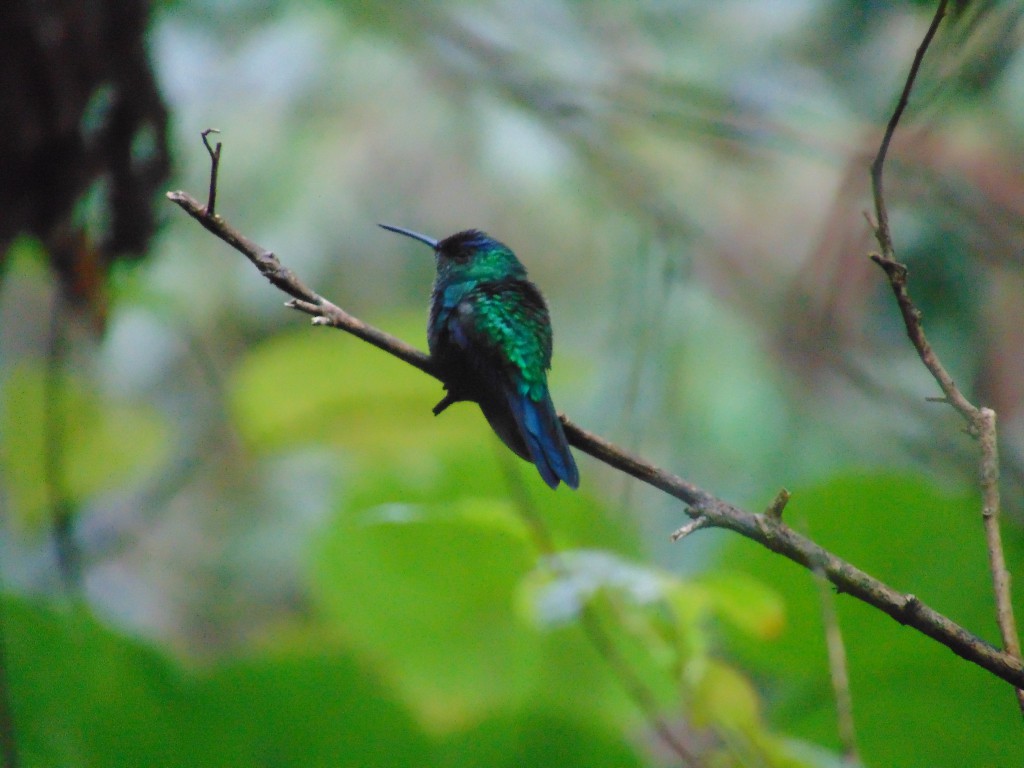Mater Natura’s involvement in the project will see UFPR’s Laboratory of Interactions and Reproductive Biology manage the technical aspects, while Mater Natura oversees administrative and financial duties.
Funder: European Research Council (ERC)
Partners: Swiss Federal Institute for Forest, Snow and Landscape Research (WSL) and Federal University of Paraná – UFPR
Executing Team:
General Coordinator: Isabela Galarda Varassin
Technical Coordinator: Miriam Kaehler
Coaches: Alejandro Restrepo, Ana Paula Caron, Catherine Graham, Daniella Bolla; Rafaela Bobato, Rafael de Oliveira, Ricardo Camargo, Thais Bastos Zanata, Heloisa Ribeiro.
Description: The processes that govern species diversity patterns occur at multiple scales. These species are interconnected by interaction networks, where the diversity of one group affects the other, and thus form the architecture of biodiversity. This project proposes the analysis of functional attributes and complex networks to understand community organizing processes on a local and regional scale in hummingbird assemblages and their nectar sources in the Atlantic Forest.
The present proposal brings together questions carried out at local scales in the Atlantic Forest, with data collection in the field, which are integrated with questions at a regional scale through the evaluation of networks of interactions and functional and phylogenetic diversity in an altitudinal gradient. Sampling will be done at three altitudes in Southeastern Brazil. The low altitudinal level will be sampled in the Serra do Mar State Park, Picinguaba nucleus (Ubatuba-SP); the average altitudinal elevation will be sampled in the Serra do Mar State Park, Cunha nucleus (Cunha-SP) and the high altitudinal elevation will be sampled in the Itatiaia National Park (Itatiaia-RJ).
Questions at a local scale involve local interactions, the effect of pollen limitation on plant fitness and the survey of functional diversity. At a regional scale, biotic dissimilarity between areas will be assessed, which is an important tool for detecting patterns in community ecology, biogeography and evolution and which can be used to infer underlying processes. In this aspect, the evaluation of interaction turnover based on its component of beta diversity of species and beta diversity of reconnections will be considered. In this way, an extensive analytical framework is being considered to support scientific understanding of the processes involved in the interactions between hummingbird species and plants in the Atlantic Forest.
_________________
O envolvimento do Mater Natura no projeto prevê que o Laboratório de Interações e Biologia Reprodutiva da UFPR gerencie os aspectos técnicos, enquanto o Mater Natura ficará responsável pelas funções administrativas e financeiras.
Financiador: European Research Council (ERC)
Parceiros: Instituto Federal Suíço de Pesquisa Florestal, de Neve e de Paisagem (WSL) e Universidade Federal do Paraná – UFPR
Equipe executora:
-
Coordenadora geral: Isabela Galarda Varassin
-
Coordenadora técnica: Miriam Kaehler
-
Pesquisadores: Alejandro Restrepo, Ana Paula Caron, Catherine Graham, Daniella Bolla, Rafaela Bobato, Rafael de Oliveira, Ricardo Camargo, Thais Bastos Zanata, Heloisa Ribeiro.
Descrição: Os processos que regem os padrões de diversidade das espécies ocorrem em múltiplas escalas. Essas espécies estão interconectadas por redes de interação, nas quais a diversidade de um grupo afeta o outro, formando a arquitetura da biodiversidade. O projeto propõe a análise de atributos funcionais e de redes complexas para compreender os processos de organização das comunidades em escala local e regional, em assembleias de beija-flores e suas fontes de néctar na Mata Atlântica.
A proposta reúne questões em escala local na Mata Atlântica, com coleta de dados em campo, integradas a questões em escala regional por meio da avaliação de redes de interações e da diversidade funcional e filogenética em um gradiente altitudinal. A amostragem será realizada em três altitudes no Sudeste do Brasil: o nível mais baixo será amostrado no Parque Estadual da Serra do Mar, núcleo Picinguaba (Ubatuba-SP); a altitude intermediária será amostrada no Parque Estadual da Serra do Mar, núcleo Cunha (Cunha-SP); e a altitude elevada será amostrada no Parque Nacional do Itatiaia (Itatiaia-RJ).
As questões em escala local envolvem interações locais, o efeito da limitação de pólen sobre a aptidão das plantas e o levantamento da diversidade funcional. Em escala regional, será avaliada a dissimilaridade biótica entre áreas, ferramenta importante para detectar padrões em ecologia de comunidades, biogeografia e evolução, além de inferir processos subjacentes. Nesse contexto, será considerada a avaliação da rotatividade das interações, baseada nos componentes de beta diversidade de espécies e de reconexões. Assim, está sendo construído um extenso arcabouço analítico para apoiar o entendimento científico dos processos envolvidos nas interações entre espécies de beija-flores e plantas na Mata Atlântica.


